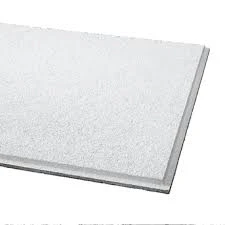- Afrikaans
- Albanian
- Amharic
- Arabic
- Armenian
- Azerbaijani
- Basque
- Belarusian
- Bengali
- Bosnian
- Bulgarian
- Catalan
- Cebuano
- Corsican
- Croatian
- Czech
- Danish
- Dutch
- English
- Esperanto
- Estonian
- French
- German
- Greek
- Hindi
- Indonesian
- irish
- Italian
- Japanese
- Korean
- Lao
- Malay
- Myanmar
- Norwegian
- Norwegian
- Polish
- Portuguese
- Romanian
- Russian
- Serbian
- Spanish
- Swedish
- Thai
- Turkish
- Ukrainian
- Uzbek
- Vietnamese
dets. . 20, 2024 10:16 Back to list
Exploring T-bar Ceiling Grid Systems for Enhanced Interior Design Solutions
Understanding T-Bar Ceiling Grids A Comprehensive Overview
T-bar ceiling grids have become a popular choice for both residential and commercial construction projects due to their versatility, aesthetic appeal, and practical benefits. These grid systems not only serve a functional purpose by supporting ceiling tiles but also contribute to the overall design aesthetics of a space. In this article, we will explore the features, advantages, installation processes, and maintenance of T-bar ceiling grids.
What is a T-Bar Ceiling Grid?
A T-bar ceiling grid is a suspended ceiling system that consists of a framework of interconnected metal channels, resembling a T. This framework is designed to hold various types of ceiling tiles or panels, which can be made from materials such as mineral fiber, metal, or plastic. The grid is typically suspended from the structural ceiling above, providing a space for electrical wiring, HVAC ducts, and other utilities, all while maintaining a clean and streamlined appearance.
Advantages of T-Bar Ceiling Grids
1. Aesthetic Flexibility T-bar ceiling grids can accommodate a wide range of ceiling tile designs, textures, and colors, allowing for creativity in interior design. Whether you're aiming for a modern, sleek look or a more traditional vibe, there are suitable tile options available.
2. Easy Installation The installation of T-bar ceilings is relatively straightforward. The grid system can be quickly assembled by laying the T-bars across the main runners, making it an accessible choice for DIY enthusiasts and contractors alike.
3. Accessibility to Utilities One of the significant benefits of a suspended ceiling grid is the easy access it provides to utilities hidden above the ceiling. This means that maintenance and repairs can be performed without the need for extensive demolition.
4. Cost-Effective T-bar ceiling grids are generally more affordable than traditional drywall ceilings, both in terms of material costs and installation labor. The ability to easily replace tiles that may become damaged or stained also reduces long-term maintenance costs.
5. Sound Absorption Many ceiling tiles designed for use with T-bar grids are engineered to absorb sound, which can be beneficial in reducing noise pollution within a room, making them ideal for offices, schools, and commercial spaces.
tee bar ceiling grid

Installation Process
The installation of a T-bar ceiling grid involves several key steps
1. Planning and Measurement Begin by measuring the room and determining the layout for the grid. Mark the positioning of the main runners on the walls.
2. Hanging the Grid Use wire hangers to suspend the main runners from the ceiling joists. Ensure these runners are level, as this will directly affect the final presentation of the ceiling.
3. Adding Cross Tees Insert cross tees between the main runners according to the planned grid layout, securing them firmly in place.
4. Placing Ceiling Tiles Finally, place the ceiling tiles into the grid. Tiles typically come in standard sizes (e.g., 2x2 feet or 2x4 feet), making it easier to fit them snugly into the framework.
Maintenance of T-Bar Ceiling Grids
Maintaining a T-bar ceiling grid is relatively simple. Regular inspections for damages, stains, or dust accumulation will help ensure the longevity of the ceiling. If any tiles become stained or damaged, they can easily be replaced without needing to disturb the entire grid system.
In summary, T-bar ceiling grids offer numerous advantages, including aesthetic flexibility, cost-effectiveness, and easy maintenance. Whether you are renovating a home or designing a commercial space, considering a T-bar ceiling grid might be a great choice that combines functionality with style. As the construction industry continues to evolve, these ceiling systems will undoubtedly remain a popular option for many different applications.
-
Transform Interiors with PVC Gypsum Ceiling: A Stylish, Durable, and Moisture-Resistant SolutionNewsMay.19,2025
-
The Smart Interior Upgrade: Discover the Durability and Versatility of Gypsum Ceiling Access Panel SolutionsNewsMay.19,2025
-
The Smart Choice for Interior Design: Discover the Value of PVC Gypsum Ceiling SolutionsNewsMay.19,2025
-
Mineral Fiber Ceiling Tiles: The Smart Blend of Performance and AestheticsNewsMay.19,2025
-
Mineral Fiber Ceiling Tiles: The Superior Choice Over Gypsum for Sound and Fire SafetyNewsMay.19,2025
-
Mineral Fiber Ceiling Tiles: Eco-Friendly Strength and Style for Every CeilingNewsMay.19,2025







